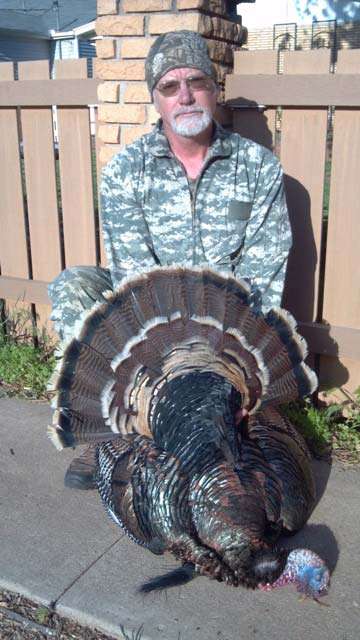Golden Eagle Restoration Project
High on a barren windy bluff overlooking Kanopolis Lake stands the weathered remnants of a project never heard of by most Kansans. Known as the eagle “hack tower,” it’s all that remains of a fourteen year endeavor to augment the population of nesting pairs of wild Golden Eagles in Kansas. “Hacking” is a term created by falconers to encompass the entire process of rearing young birds in the wild, while giving them no visual contact with their handlers, then releasing them with hopes they will someday return to nest where they themselves were fledged.
This joint project between the KDWP and other agencies operated from 1986 through 1996 at Wilson reservoir during which time 33 young golden eagles were fledged and released into the wild. During those years, a nearby prairie dog town was destroyed, eliminating a major source of prey for the young eagles. In 1997 a group of Westar current and retired employees known as the Green Team became interested in the project’s proposed move to Kanopolis and donated time, labor and materials to construct the hacking tower that stands there in ruins today.
The hack tower stood 7 feet off the ground and consisted of 3 separate units 8 feet x 9 feet square and 6 feet tall. The units were built 4 feet apart from each other allowing an attendant to feed, water and observe the eagles while remaining unseen. The back of each cage was enclosed, but the front of each was constructed of rows of pipe, enabling the eaglets to become familiar with their surroundings and to see each other. The pipe fronts of the cages simply hinged downward when the time came to release the eagles into the wild. A sliding door in each unit allowed for watering and a large PVC pipe through the wall of each allowed for meat to be inconspicuously slipped into the cage. In 1997 when the project moved to Kanopolis, a 30 to 35 acre prairie dog town thrived adjacent to the tower.
Over the 14 years of the project, wild golden eagle chicks were obtained from Colorado and Wyoming, and captive-hatched chicks were obtained from zoos in Kansas and Alabama. The goal was to get chicks that were 7 to 8 weeks old and to open the cages when the chicks reached 11 weeks. Newly procured golden eagle chicks were put into the cages, sometimes 2 to a cage depending on the number obtained. Each unit contained sticks and limbs for perches and a makeshift nest in the corner to keep their surroundings as natural as possible. Summer volunteers fed them chunks of domestic rabbit meat through the PVC pipe chutes and gave them water through the sliding doors, always vigilant to remain unseen so the eaglets would never associate humans with being fed. While the chicks remained confined they were closely observed either from a walkway along the back of the tower or from a blind set up nearby.
When all the birds were deemed ready for their freedom, radio transmitters were attached to each and the cage fronts lowered so the young eagles could then come and go as they pleased. Feeding was still maintained after the birds were released in hopes of keeping them in the area a little longer and to augment their diets while they learned to fend for themselves. At this point since the eagles were no longer confined, it became a little trickier to provide food for them at the hack tower while still remaining inconspicuous. I contacted one of the guys who worked as an intern one summer during the project, and he told me stories of hiking through the prairie dog town each night after dark carrying road-killed carcasses because the domestic rabbit meat had run out. He would sneak as close to the tower as possible, fling the carcasses up onto the tower platform and retreat the way he had arrived.
This is yet another story in an amazing journal of adventures that never in a million years would I have associated with the state of Kansas. According to reports I read and participants with whom I spoke, this golden eagle reintroduction program appears to have fledged 39 young eagles into the wild during its fourteen year existence. For reasons unexplainable, and to the best of anyone’s knowledge, none of those golden eagles ever returned to nest in Kansas. The program ceased for several reasons, but the clincher seemed to be an increased difficulty in obtaining golden eagle chicks. Today the hacking tower stands empty, quiet and falling down and the nearby prairie dog town barely survives if at all. Even though it didn’t give the desired results, can any project that added 39 more of those majestic birds to our skies ever be called a failure? …Continue to Explore Kansas Outdoors!
Steve can be contacted by email at [email protected].


